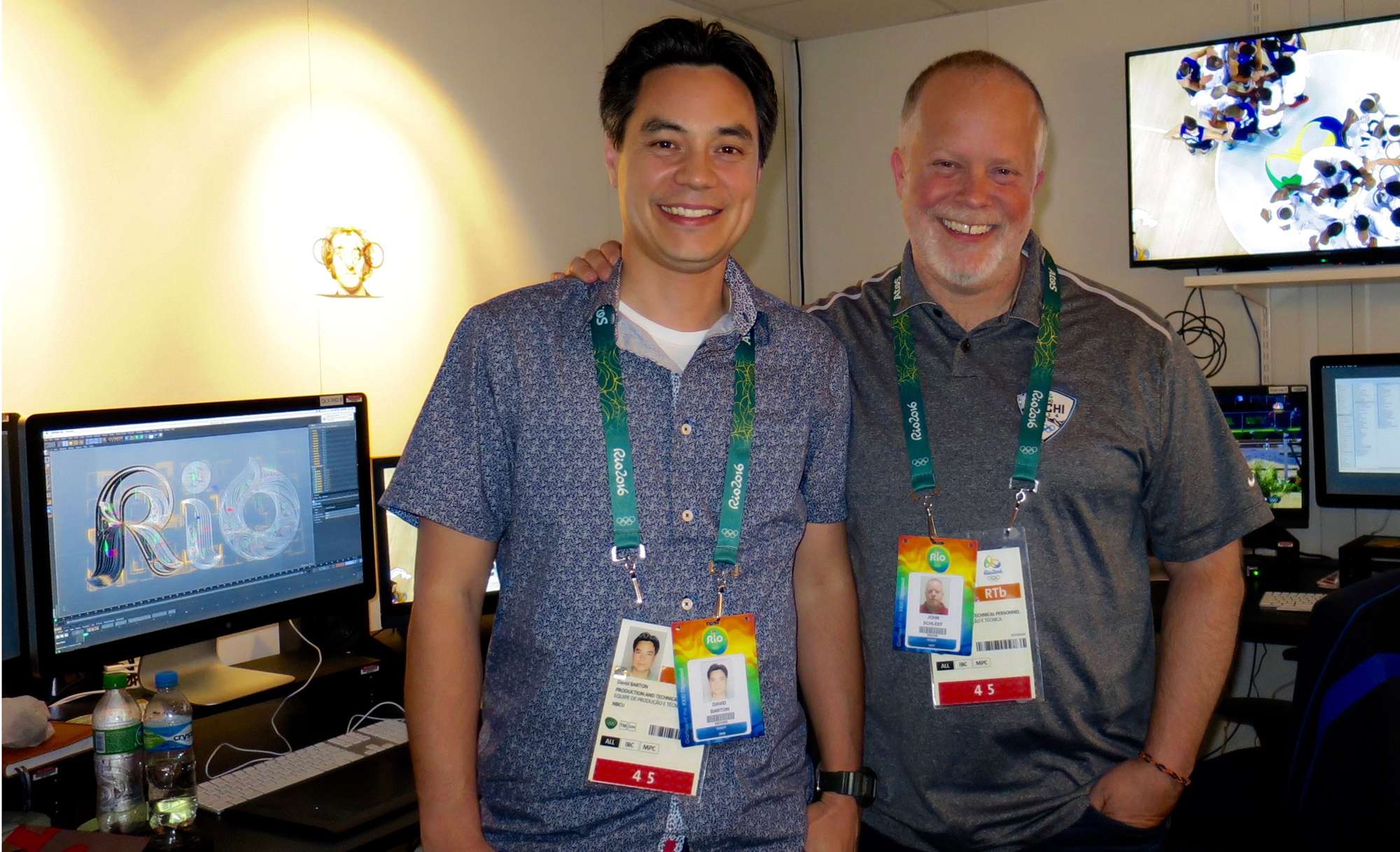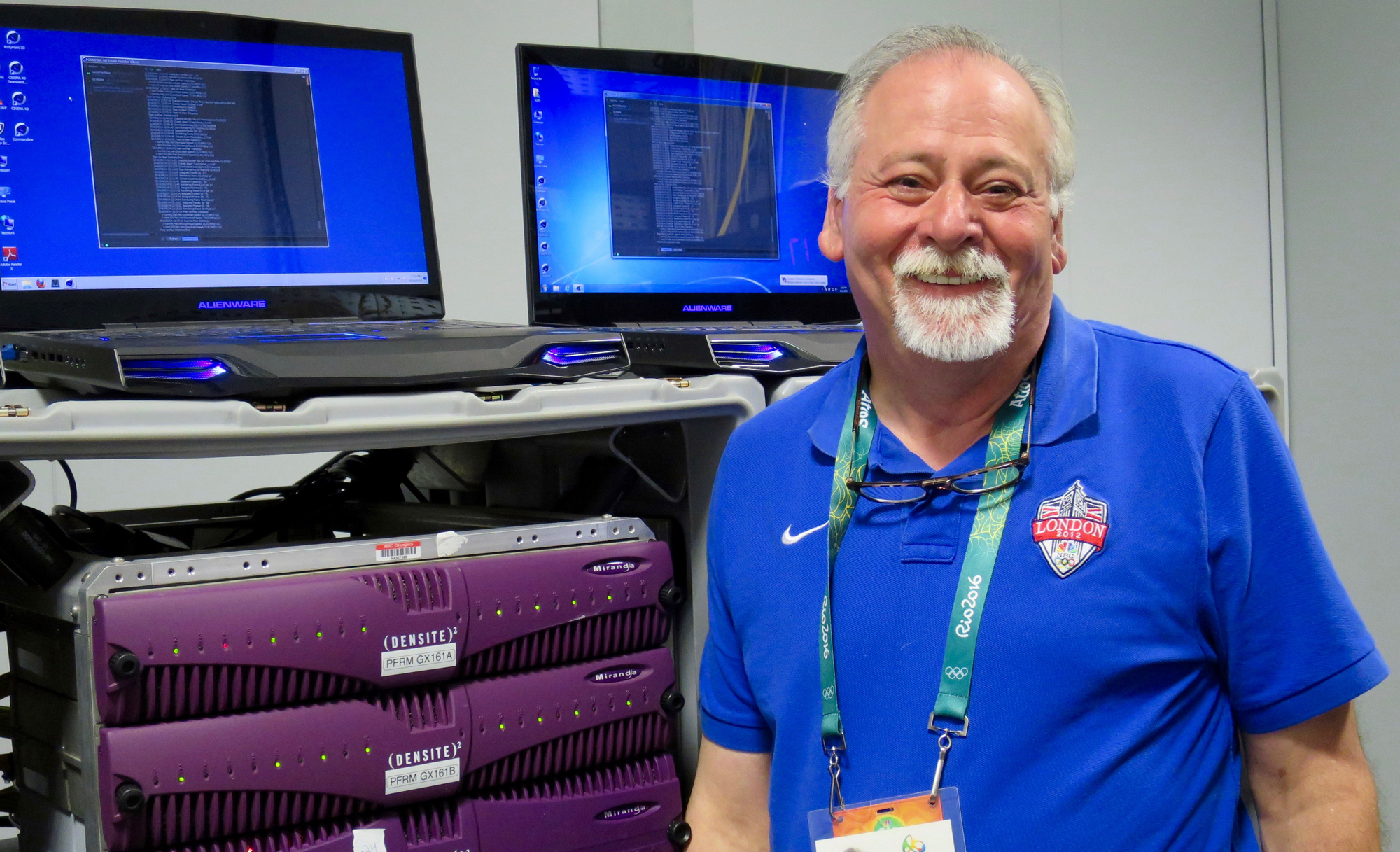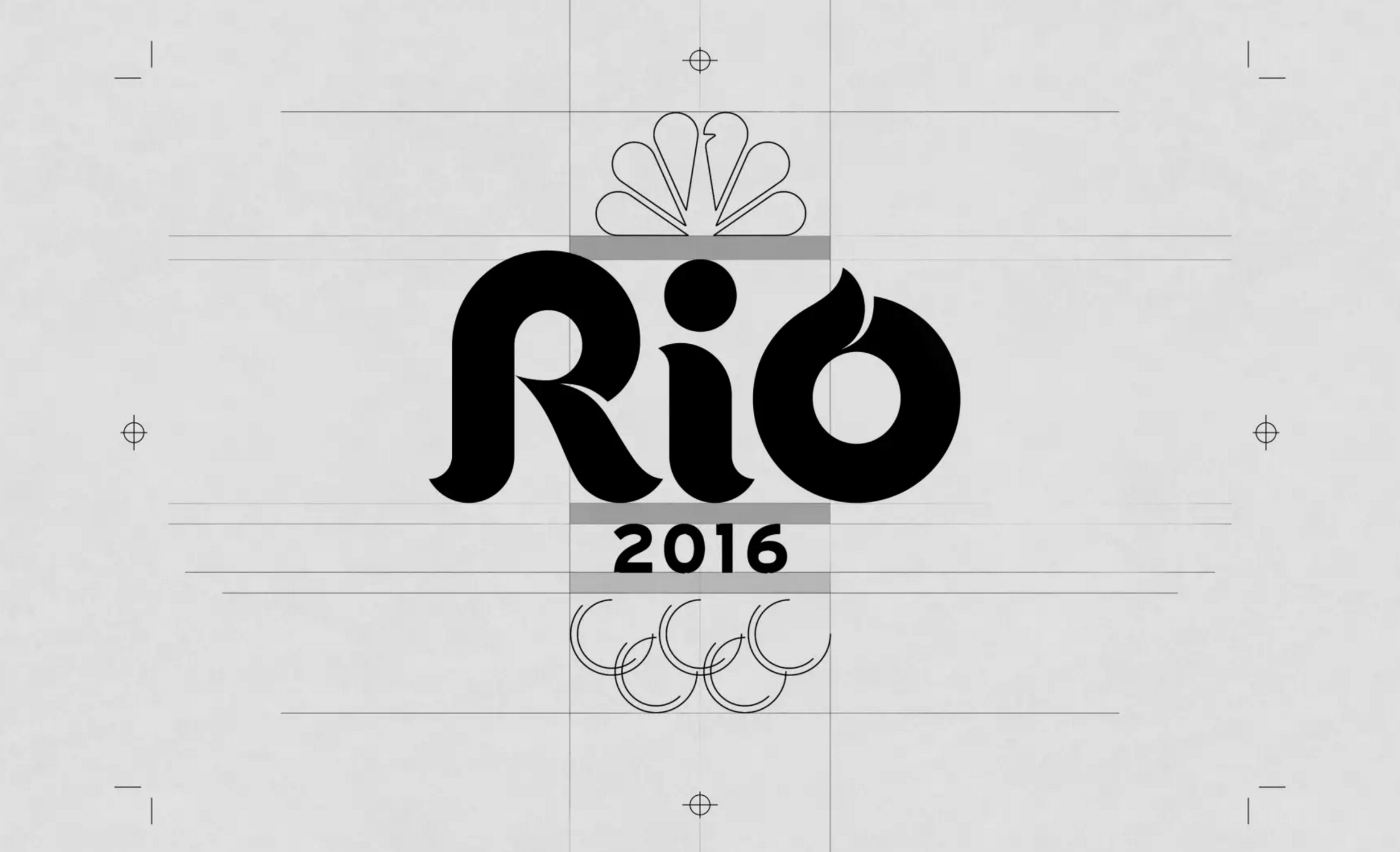Live from Rio 2016: Veteran Graphics Team Designs Package Inspired By Brazilian Culture
More so than in any recent Olympic Games, NBC Olympics is making the host city the star of its creative and production process here in Rio. Nowhere is that more evident than in the network’s highly robust – and in-house built – graphics package.

Lead art directors David Barton (left) and John Schleef built NBC Olympics’ graphics package in-house.
David Barton and John Schleef – who are working their sixth Olympic Games together as NBC Sports’ lead art directors – have spent months researching and designing a graphics package that they feel fully encapsulates the spirit of these, but more important the spirit of Rio de Janiero.
“We always start with where are we and how important is that?” says Barton. “At the start, we’re selling and the sell of Rio is just as important as the sell of the Games themselves. This is a special circumstance. Everyone wants to be here, so that culture element of it becomes so important. We wanted to make a package that showed that this is the place to be.”
The goal was to fully embrace the inspirations brought from the city’s culture, landscaping, architecture, and more. Barton, Schleef, and members of their team spent weeks touring and photographing locations throughout Rio, including iconic locals such as Christ the Redeemer, Sugarloaf Mountain and the Escadaria Selarón.
While NBC hired graphics design firm Trollbäck + Company on the design of the primary NBC Rio Olympics logo, the entire package beyond that was built in house by NBC artists. In a truly collaborative process, all ideas and inspirations from the team’s research were thrown down on the table, heads were put together, and plans were made for all forms of graphics including animations, transitions, backgrounds, lower-thirds, etc.
“That’s the creative process they have as artists,” says Phil Pauly, Director, Graphics Engineering & Operations for NBC Sports and NBC Olympics. “That’s a talent that you can’t go and just get. It’s a whole lot more than placing the time in a box. I couldn’t be more proud of these guys.”
It’s a veteran team for the graphics department in Rio with four members of the team having worked more than 10 Olympics together. That includes Pauly who is working his 11th Olympics, dating back to Barcelona in 1992.
There are 12 graphics operators in total on site with Barton and Schleef running two groups of four artists at any given time working off of nine machines. Crews are knocking out 12-hours shifts per day and editing off Mac Pros; each equipped with a 16TB G-Technology G-Raid.

NBC Olympics’ Director, Graphics Engineering & Operations Phil Pauly with his custom-built render farm that has graphics editors working at blazing speeds.
Editors are working at a blazing speed thanks to a custom-built render farm that Pauly has cobbled together himself and brought here to Rio. The render farm is made of ten Mac Minis and four Alienware computers (the kind typically used for gaming) and is running 72 processors. According to Pauley, “we are doing two-hour renders in two minutes.”
In this era of at-home workflows, Pauly says it’s a no-brainer to want to handle rendering on-site.
“We [used the network] in Sochi and that was excruciatingly, painfully slow,” he says. “Here we have immediate results. There’s no way you are going to get fast enough transport back and forth. When it’s here, you send your things in to render it goes into a very fast server and once its there it hits the other boxes and flies.”
The render farm is just one of a few new elements in the backbone of the graphics workflow here at Rio. On the back end, EMC Isilon (400TB) and Aberdeen servers are being used as content management sources, in addition to the help of a FileCatalyst file transfer solution. The team is also using ChyronHego Mosaic with Matrox cards for everything at the IBC. The Mosaic is used for scoring data and all lower thirds, transitions, etc and is offering the crew lots of flexibility.
“One of the reasons why we use ChryonHego is I think the manual control and interaction between the producer and the graphic world is so important,” says Pauly. “The automation of something and pressing a button and watching a bunch of things animate is nice and wonderful and does a show, but you’re seeing such creative energy here. Our team is very strong and they can shift things on the fly. That’s their talent.”
The graphics team also benefitted greatly for significantly less stressful setup in Rio thanks to the pre-fab work done back in Stamford prior to the Games overseen by NBC Olympics’ VP if IBC Engineering Terry Adams. That work was able to wipe out three days typically needed to install the system on site.
“Engineering-wise this has been a very satisfying [Olympics],” says Pauly. “We are trying some new things and they are working.”
Will many of these new changes set a precedent for future Olympics? Pauly sure hopes so.
Doing everything in advance like this saves time, saves money,” he says, “and although it looks like it’s costing more up front, the result is a lot of time, sweat, and effort saved here that we don’t have to extend anymore.”


